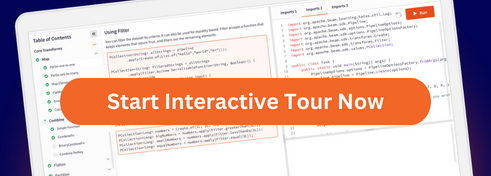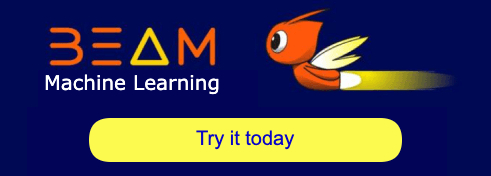blog
2025/07/08
Our Experience at Beam College 2025: 1st Place Hackathon WinnersAditya Shukla
&
Darshan Kanade
Introduction: The Beam of an Idea
In the world of machine learning for healthcare, preprocessing large pathology image datasets at scale remains a bottleneck. Whole Slide Images (WSIs) in medical imaging can reach massive sizes. Traditional Python tools (PIL, etc.) fail under memory pressure, especially when handling thousands of such high-resolution images. This becomes a bottleneck for ML modeling tasks using standard tools.
Having previously worked on image processing for object detection in machine learning, we also understood how crucial it is to preprocess and structure image data correctly for downstream tasks. These challenges are non-trivial and even more critical in healthcare, making it a natural and high-impact use case for scalable data processing frameworks like Apache Beam.
So, in the Beam Summit 2025 Hackathon, we joined as team “PCollectors” with the goal to leverage Beam to process large image data and convert it to a format suitable for downstream ML tasks. We were amazed to know that we secured 1st place with the implemented solution!
The Project: Scalable WSI Preprocessing Beam Pipeline
The Goal
The primary objective of the pipeline was to process patient data (CSV) & WSIs, extract embeddings, combine the metadata, and output the final dataset in TFRecord format, ready for large-scale ML training.
Solution Overview
Our pipeline processes:
- Patient metadata (CSV)
- WSI files (.tif)
- Split the images into “tiles”
- Extract filtered image tiles based on the background threshold
- Generate max & avg embeddings per patient using EfficientNet
- Merge metadata + embeddings into TFRecords
All in a scalable, memory-efficient, cloud-native pipeline using Apache Beam and Dataflow.
Dataset
Source: Mayo Clinic STRIP AI Dataset (Kaggle) Metadata: Each row = { image_id, center_id, patient_id, image_num, label } Multiple images per patient Labels exist only at the patient level Images: High-res .tif pathology slides
Tech Stack
- Apache Beam: Orchestration engine
- Google Cloud Dataflow: Scalable runner
- Google Cloud Storage: Input TIFFs + output TFRecords
- TensorFlow: For embedding generation (EfficientNet) and TFRecord serialization
The Hackathon Journey
Participating in the hackathon introduced us to multiple new things and allowed us to learn and implement simultaneously. Through the hackathon weekend, we:
- Designed the end-to-end pipeline
- Integrated pyvips + openslide for efficient image loading
- Used Beam’s RunInference API with TensorFlow
- Tiled and filtered images
- Wrote patient-level embeddings to TFRecords
What we Learnt
Apache Beam is really powerful for parallel and cloud-native ML preprocessing. Dataflow is the go-to tool when processing large data, like medical images
What’s Next for The Project
Looking ahead, the pipeline can be extended beyond fixed-size tiling by incorporating image segmentation techniques to generate more meaningful patches based on tissue regions. This approach can improve ML model performance by focusing only on relevant areas. Moreover, the same preprocessing framework can be adapted for video data, where frames can be treated as time-indexed image slices, effectively enabling temporal modeling for time-series tasks such as motion analysis or progression tracking. Finally, we plan to adapt this pipeline to multiple downstream use cases for AI in healthcare by combining histology images with genomic data, clinical notes, or radiology scans, paving the way for more comprehensive and context-aware models in biomedical machine learning.
Project Submission Demo: Beam Demo - PCollectors.mp4
Conclusion
We are ML Engineers, working at Intuitive.Cloud, where we play around with large-scale data to build scalable, efficient, dynamic data processing pipelines that prepare it for downstream ML tasks, with Apache Beam and Google Cloud DataFlow being the central pieces.
Participating in the hackathon was a great learning opportunity, huge thanks to the organizers, mentors, and the Apache Beam community!
Latest from the blog
blog & gsoc
2025/10/14
Google Summer of Code 2025 - Enhanced Interactive Pipeline Development Environment for JupyterLab
Canyu Chen
blog & gsoc
2025/09/26
Google Summer of Code 2025 - Beam ML Vector DB/Feature Store integrations
Mohamed Awnallah
blog & gsoc
2025/09/23
Google Summer of Code 2025 - Beam YAML, Kafka and Iceberg User Accessibility
Charles Nguyen



